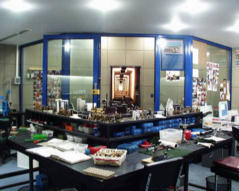

 The Accurate Reloading Forums
The Accurate Reloading Forums  THE ACCURATE RELOADING.COM FORUMS
THE ACCURATE RELOADING.COM FORUMS  Guns, Politics, Gunsmithing & Reloading
Guns, Politics, Gunsmithing & Reloading  Reloading
Reloading  primer burn rate
primer burn rateGo  | New  | Find  | Notify  | Tools  | Reply  |  |
| one of us |
does anyone know the burn rates of primers in the large rifle category. specifically, does the Winchester Large Rifle primer burn hotter than the Federal 210, does it have the same burn rate, or does the Federal 210 burn hotter than the Winchester Large Rifle primer? Thanks for your input. Tom Purdom | ||
|
| one of us |
Here is a table I found. http://www.reloadingroom.com/page35.html Informal testing using my chronograph shows it varies a bit from caliber to caliber, based on an increase in vel. readings. LIFE IS NOT A SPECTATOR'S SPORT! | |||
|
| one of us |
Not intending to stir the pot but I don't think "burn rate" quite describes what happens with a primer. I was always led to believe a primer has two characteristics. "Brissance" is the explosive effect the primer has and the "burn time" is the length of time the primer burns. A long burn time is considered a good thing. Brissance is not. How the two combine may be what we call burn rate. Part of the reason it is difficult to compare primers is combination of those two characteristics. | |||
|
| One of Us |
OK, I'll stir the pot. Primers don't burn, they detonate. Two completely different physical reactions. | |||
|
| Powered by Social Strata |
| Please Wait. Your request is being processed... |
|

Visit our on-line store for AR Memorabilia

